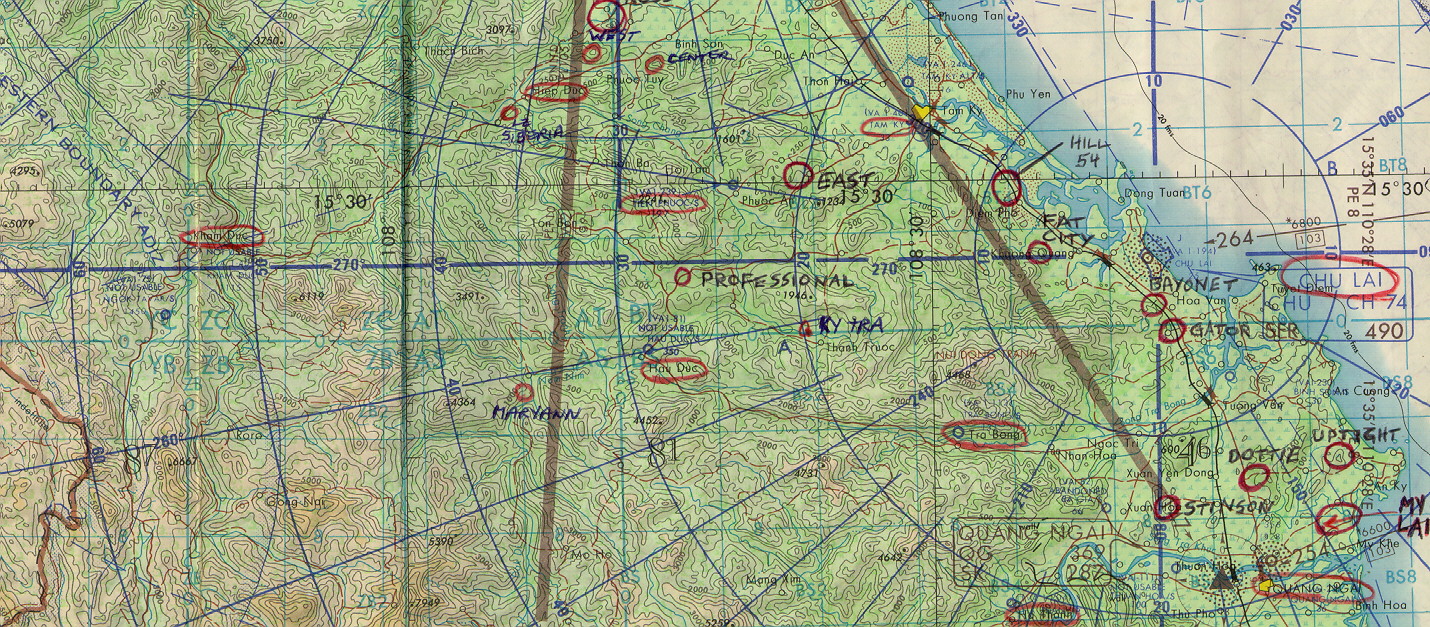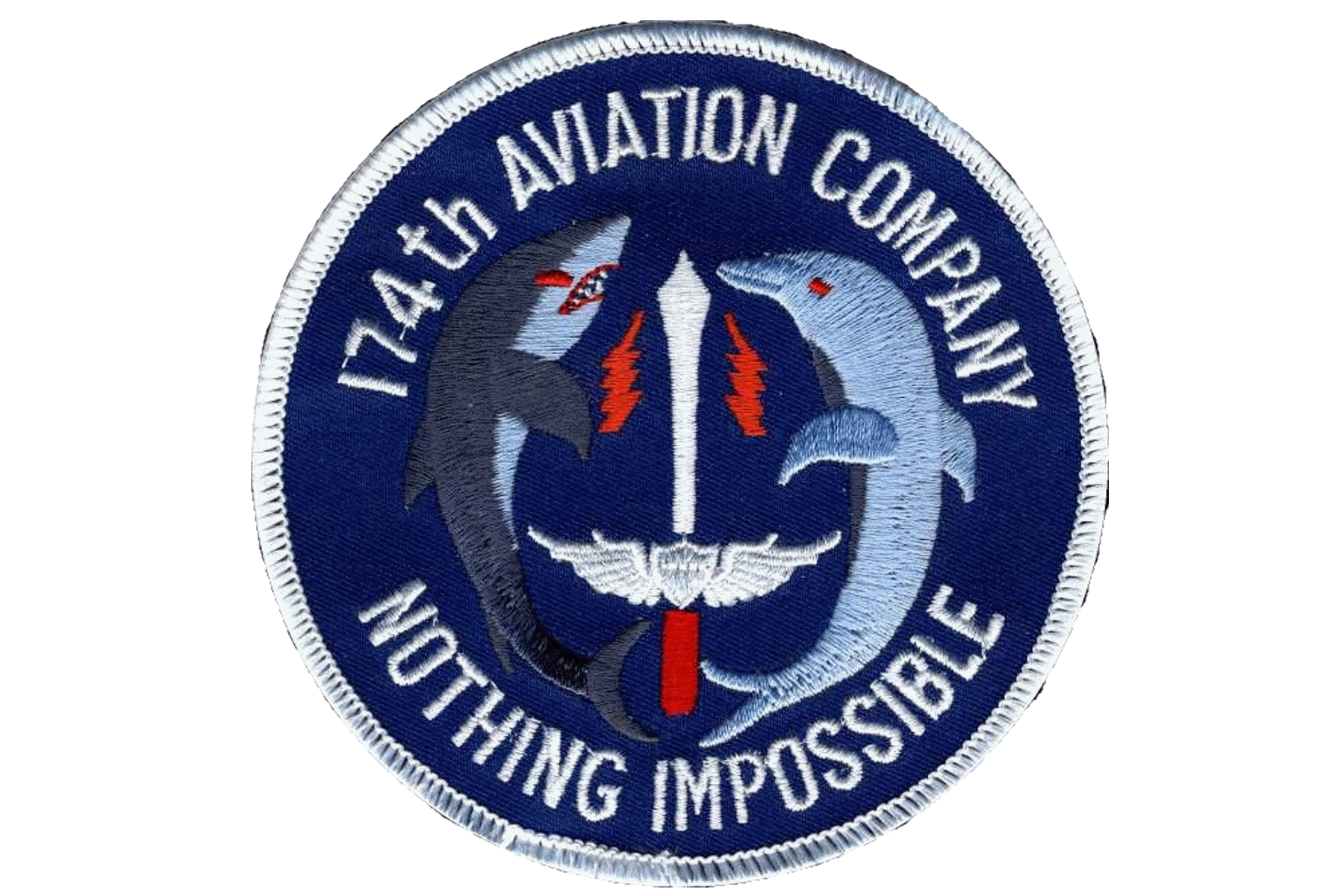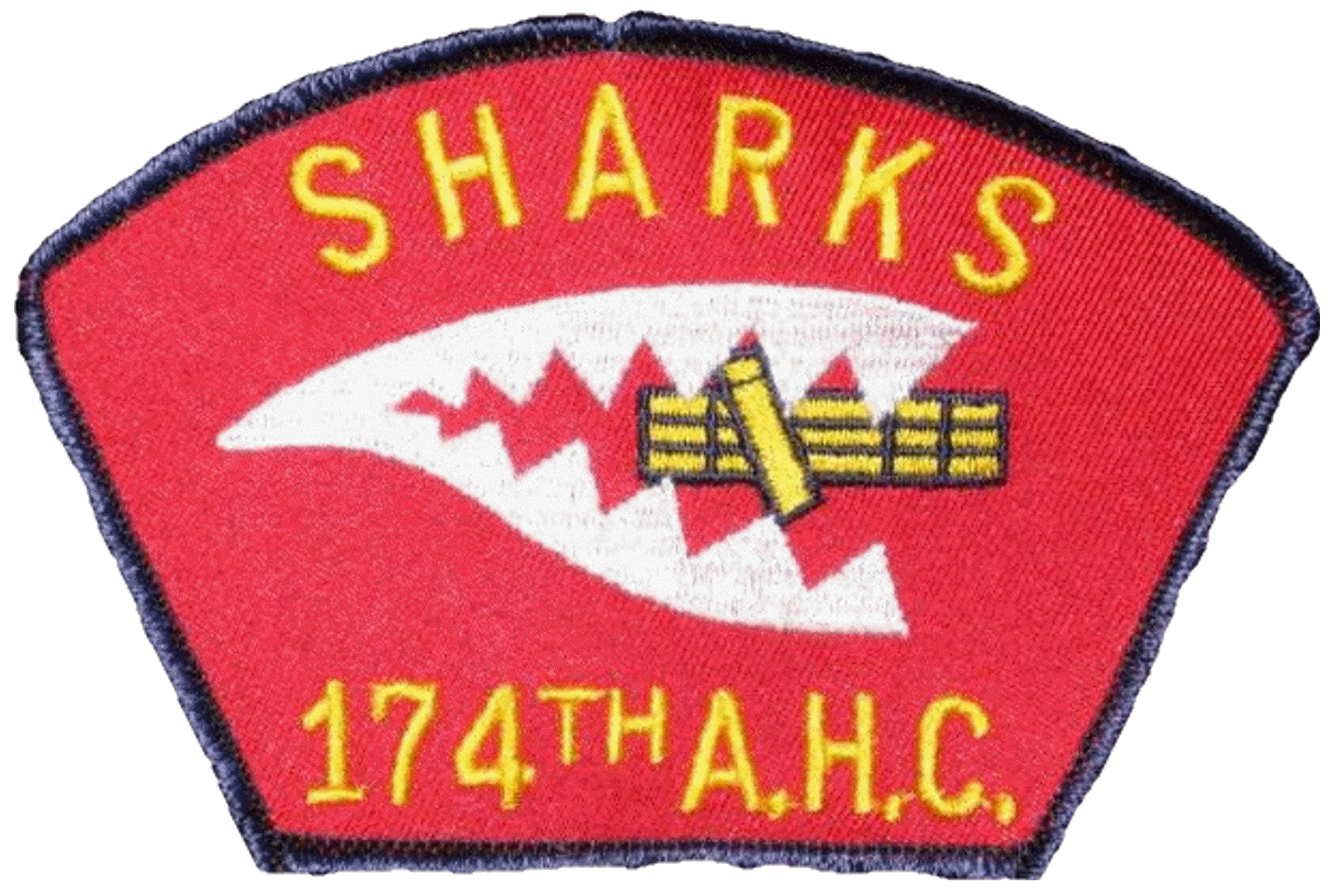Below is the exact text from an article that appeared in the September 4, 1970
edition of "Under the Southern Cross," the official newspaper of the Americal Division. While the article does not discuss the aviation units involved, the 174th AHC participated in this operation as well as other helicopter assets from the Americal Division.
Under the Southern CrossSeptember 4, 1970
KHAM DUC
(DIVARTY IO) Two years and two months to the day since Kham Duc was lost to an NVA Division, this Special Forces advised CIDG camp was retaken by the same Division units that played a central role in that withdrawal of allied forces.
In May of 1968, an entire NVA Division surrounded Kham Duc, overran the ouposts, and from the high ground around the airstrip began an intense motar and recoilless rifle barrage. The camp was defenseless and a contingency plan to evacuate all personnel was quickly put into action.
In what has been called "one of the most harrowing evacuation efforts of the Vietnam
war," the Americal Division sent an infantry battalion and a battery of artillery to
hold back the enemy until the evacuation could be completed. The plan called for the
approximately 1500 persons in the camp to be flown out in a two-day period.
Under cover of more than 150 airstrikes by both U.S. and Vietnamese aircraft from
units as far away as Cam Ranh Bay, Tuy Hoa, and Thailand, the heroic airlift was
accomplished in only six hours.
The successful evacuation, however, did not have the flavor of an offensive victory,
so when Kham Duc was reclaimed from the enemy, the privilege belonged to the men that were ordered to fight and withdraw. More than two thousand ARVNs moved into the ridgeline during the first few days of the recent operation to secure the highground around the camp.
In the valley below, the 2nd Battalion, 1st Infantry, 196th Infantry Brigade, was
inserted around the airstrip where they quickly cleared the lowland area. Cannoneers
from D Battery, 3rd Battalion, 82nd Artillery, and A Battery, 1st Battalion, 82nd
Artillery, were next and within twenty minutes of their arrival the two batteries of
howitzers were ready to deliver their devastating support.
This time it was the NVAs turn to withdraw, and while resistance was encountered by
the first elements of both the ARVNs and Americans, it was only a very scattered and
ineffective effort, a cover for the enemy retreat.
The 26th Engineer Battalion, after destroying over 400 booby traps seeded in the
black-top airstrip, had the job of restoring the surface which was pockmarked by a dozen bomb craters. Just four days after the first assault, a C-130 landed on the repaired runway, the first of 30 sorties that day.
An impressiue victory, accomplished by Vietnamese and American forces, working
together in the air and on the ground. The NVA had beaten a hasty retreat, inflicting
only very light casualties and paying heavily for them. But to the 2nd Battalion, 1st
Infantry and the 3rd Battalion, 82nd Artillery it was a special victory, a victory
exactly two years and two months ouerdue--they had been to Kham Duc hefore.
(Source: "Under the Southern Cross," September 4, 1970)
|

![]() Return to top of: 1970 History Page.
Return to top of: 1970 History Page.![]() Return to top of: Home Page.
Return to top of: Home Page.
